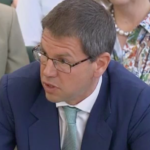
An injection of taxpayer cash into the proposed Swansea Tidal Lagoon would not represent a double subsidy, according to Tidal Lagoon Power boss, Mark Shorrock.
Shorrock was grilled this morning by MPs on the Business, Energy and Industrial Strategy Committee. While several MPs declared an interest in the project, they attempted to quantify project costs, risks and potential benefits.
Three strikes
Tidal Lagoon Power (TLP) is lobbying for a 60-year bilateral contract for difference (CfD), a mechanism which guarantees a set price for power. The structure gives investors confidence that they will make their money back by providing long-term revenue stability and visibility.
Shorrock said the 60-year structure was based on advice from Treasury’s UK Infrastructure team and claimed that the lagoon could deliver renewable power at the same per megawatt subsidy as bilaterally awarded in 2013 to EDF for Hinkley Point C (£92.50/MWh rising with inflation).
However, that ‘Hinkley equivalent’ strike price for the lagoon is based on a “descending structure”, which means higher upfront payments that decrease over time.
TLP’s calculation also includes an injection of cash from the Welsh government, rumoured to be in the region of £100m-£200m.
That “commercial equity investment” would enable a lower cost of capital for the project, said Shorrock, and would be “fully repaid”. As such, “it is not a subsidy,” he suggested.
Shorrock also told the committee that any construction cost overruns would be picked up by equity investors.
Without investment from the Welsh government, which is keen to create jobs and value from tidal power projects, Shorrock said the strike price would be £92.70/MWh over 60-years.
However, when pushed for a like-for-like comparison with Hinkley C over a 35-year period and without Welsh government money, Shorrock said required support would be “about £150/MWh”.
Now or never?
Former energy minister Charles Hendry, whose review found the tidal lagoon to be a “no regrets” infrastructure project, suggested too much focus was being placed on cost comparisons with mature technologies.
Hendry told the committee that as minister he “made exactly the same decision on offshore wind [to pay high initial subsidies] and we are now reaping the benefits [of lower costs and competition].”
He dismissed claims by Ecotricity that it could deliver tidal power at half the cost of Swansea Bay, and warned that, “if we stop this process now and start from scratch we will not have a UK tidal lagoon industry. People will simply walk away”.
“This is something we ought to be taking forward,” added Hendry. “If we want the benefits of innovation, we have to accept that in the early stages, the pilots will be more expensive. But that is the way in which you bring the price down.”
Richard Howard, head of research at energy consultancy Aurora, told the committee that greater clarity in comparing costs of the proposed lagoon is required, and questioned whether a project that delivered broader economic benefits, such as jobs and tourism, should be loaded onto energy bill payers.
The economist advocated bringing competition to bear in driving down costs of tidal technologies and suggested both central and devolved governments should not “get overly excited” about export opportunities as a result of early investment.
Watch the session here or below.
Related stories:
Atlantis boss: Think big to make tidal power cheaper than Hinkley C
Atlantis plans 160MW Wyre tidal barrage
Engineers tell government to pay for tidal power
Follow us at @EnergystMedia. For regular bulletins, sign up for the free newsletter.



